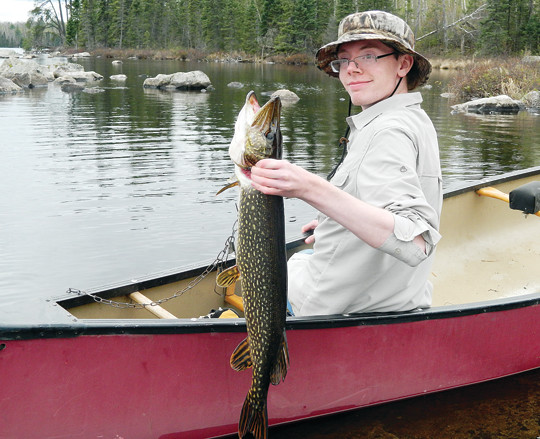Support the Timberjay by making a donation.
DNR proposes zone approach for northern pike regulations
REGIONAL— For many residents and visitors in northeastern Minnesota, catching a hefty northern pike is a truly memorable experience. And a proposal recently made public by the Department of Natural …
This item is available in full to subscribers.
Attention subscribers
To continue reading, you will need to either log in to your subscriber account, or purchase a new subscription.
If you are a current print subscriber, you can set up a free website account and connect your subscription to it by clicking here.
If you are a digital subscriber with an active, online-only subscription then you already have an account here. Just reset your password if you've not yet logged in to your account on this new site.
Otherwise, click here to view your options for subscribing.
Please log in to continue |
DNR proposes zone approach for northern pike regulations
REGIONAL— For many residents and visitors in northeastern Minnesota, catching a hefty northern pike is a truly memorable experience. And a proposal recently made public by the Department of Natural Resources is an attempt to ensure that such an experience will be available for future generations.
That’s according to Don Pereira, DNR Fisheries Chief, who is hoping to build public support for a plan that would address varying northern pike problems and concerns across three separate zones in Minnesota— northeast, north central, and south.
“There is no one-size-fits-all when it comes to effective pike regulations,” said Pereira. “However, a zone concept, if enacted, could protect large pike in the northeast, increase pike populations in the south and eventually solve the problem of an over-abundance of small pike in north-central Minnesota.”
Here in the northeast, where northern pike populations are relatively low but well balanced, Pereira said the goal is to head off the kinds of problems being experienced elsewhere in the state. In particular, Pereira said, the DNR is proposing to reduce the harvest of larger northern pike, most likely by setting a maximum size limit, above which northerns would have to be released.
“Anglers tell us that the medium size they like to eat is a 27-inch fish,” said Pereira.
By setting a maximum size limit somewhere above that level, the DNR plan would still allow for anglers to harvest fish for the frying pan, without risking overharvest of large fish.
Pereira said large northern pike don’t just provide exceptional angling opportunities, they play an important ecological role in most lakes by keeping the numbers of small northerns under control. “There’s good evidence that they suppress their own populations,” said Pereira.
In lakes, such as many of those in north-central Minnesota, where large northern pike are now rare, huge numbers of small northerns can quickly come to dominate a fishery, creating a whole host of problems. Pereira said northern pike are extremely effective predators and when found in large numbers in lakes, they can suppress other species, such as walleye and perch.
“We know we can’t stock walleyes below a certain size where there are abundant northern populations,” he said.
In north-central Minnesota, defined as an area west of Hwy. 53 and north of Hwy. 55, Pereira said the DNR is considering allowing greater harvest of small northern pike (under 22 inches) with a protected slot in the range of 24-28 inches. One or two larger fish above the protected slot could also be taken under the proposal.
In the south, where northern pike grow more quickly, the DNR is weighing a plan that calls for increased stocking, a two-fish bag limit and a minimum size requirement.
Zone approach more workable
While the DNR already has already implemented lake-specific northern pike regulations on some larger lakes (and those rules would remain in effect for now), Pereira said creating new regulations for each of the roughly 3,000 lakes that currently hold viable northern populations just isn’t practical. Pereira said the pike issues tend to be pretty consistent in lakes within the three separate zones, and by taking a zone, rather than lake-specific, approach, the DNR can address the various concerns without having to promulgate differing rules for thousands of lakes.
Pereira said he’s confident that the DNR’s plan will address the biological issues the agency is seeing with northern pike populations, but he acknowledged that there’s always a political dimension to DNR policy changes— and that’s why the agency is taking steps to better inform the public about the proposal and to get feedback on it at the same time.
“With good dialogue and support from anglers, spearers and all of our stakeholders, we should be able to improve pike fishing for those who are harvest-oriented as well as those keen about pursuing trophy northern pike.”
DNR technical experts will be working to determine which regulations may work best and will be talking with anglers and stakeholders this summer and fall. If you want to follow the debate or get more information, go to www.mndnr.gov/ pike for the latest about the proposal, including frequently asked questions, maps with zone locations and pike densities, and information on how to comment.






